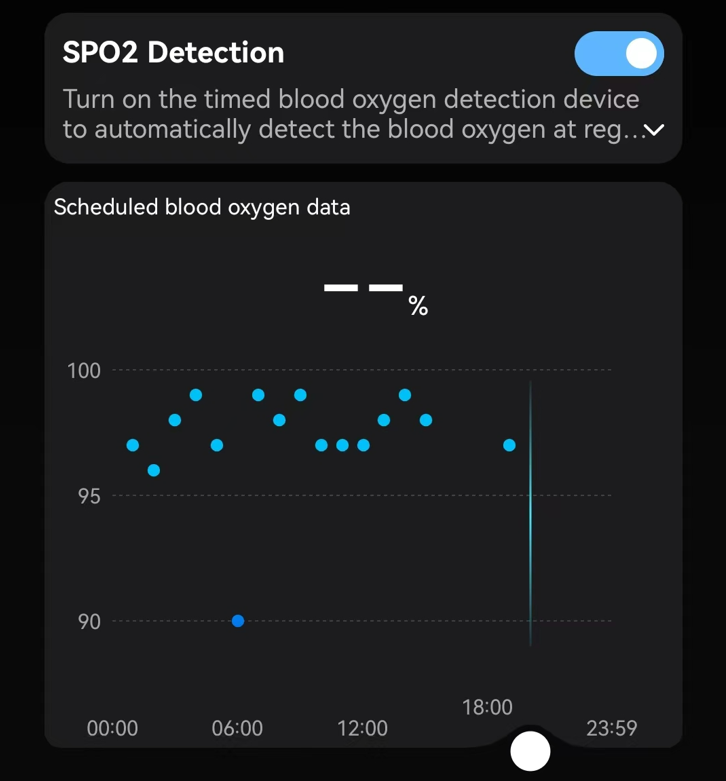Obwohl die Bestimmung des Sauerstoffgehalts im Blut häufig zur Diagnose dient, ist vielen Menschen nicht bewusst, wie wichtig dieser Wert ist und wie hilfreich er bei der Messung des allgemeinen Gesundheitszustands sein kann.
Was ist der Blutsauerstoffspiegel?
Der Blutsauerstoffgehalt ist ein Maß für die Sauerstoffmenge in den roten Blutkörperchen. Diese Messung liefert wichtige Informationen darüber, wie gut die Lunge funktioniert. Beim Einatmen liefert die Lunge Sauerstoff an die Kapillaren, die wiederum sauerstoffreiches Blut an das Herz liefern, das das Blut dann in den Rest des Körpers pumpt.
Die Messung des Sauerstoffgehalts im Blut hat vielfältige Anwendungsmöglichkeiten. Sie wird beispielsweise zur Überwachung von Patienten vor, während und nach Operationen verwendet, zur Überwachung von Patienten, die Medikamente einnehmen, die die Lungenfunktion beeinträchtigen können, oder als Methode zur Beurteilung der Lungenfunktion bei Patienten, deren Sauerstoffgehalt im Blut aufgrund einer Krankheit gesunken ist.
Wie wird der Blutsauerstoff gemessen?
Die am häufigsten verwendete Methode zur Messung des Sauerstoffgehalts im Blut ist die Pulsoximetrie, ein schmerzloser und nichtinvasiver Test. Bei den meisten Menschen wird der Sauerstoffgehalt im Blut mit einem Pulsoximeter gemessen, das normalerweise an den Fingerspitzen angebracht wird. Die Pulsoximetrie erkennt und misst den Sauerstoffgehalt des Blutes durch Lumineszenz.
Im Vergleich zur herkömmlichen Methode der Entnahme einer arteriellen Blutprobe ist die Pulsoximetrie ein nicht-invasiver und schneller Test. Während herkömmliche Pulsoximeter für Stichproben geeignet sind, sind sie für kontinuierliche Messungen weniger geeignet. Tragbare Gesundheitstracker können den Blutsauerstoffgehalt kontinuierlich genauer messen.
Während eine Blutuntersuchung die zuverlässigste Messung des Sauerstoffgehalts im Blut ermöglicht, weist ein Pulsoximeter in der Regel eine Genauigkeit von 2 bis 4 % des tatsächlichen Blutsättigungsgrads auf und bietet damit eine ausgezeichnete Referenz für die Überwachung des eigenen Sauerstoffgehalts im Blut.
Was ist ein normaler Blutsauerstoffspiegel?
Bei einer arteriellen Blutgasanalyse oder einem herkömmlichen Bluttest wird der Sauerstoffgehalt im Blut in Millimeter Quecksilbersäule (mmHg) gemessen. Der Normalbereich liegt zwischen 75 und 100 mmHg, ein Wert unter 60 mmHg gilt als niedrig.
Die Pulsoximetrie misst den Sauerstoffgehalt in Prozent Sättigung, wobei der Normalbereich zwischen 94 und 100 Prozent liegt. Wenn der Blutsauerstoffgehalt unter 94 % fällt, besteht Grund zur Sorge. Jeder, der einen Blutsauerstoffgehalt unter diesem Wert feststellt, muss sofort seinen Arzt kontaktieren.
Ist ein niedriger Sauerstoffgehalt im Blut ein Anzeichen für COVID-19?
Eine COVID-19-Infektion greift die Lunge an und verursacht einen deutlichen Abfall des Sauerstoffgehalts im Blut. Allerdings können auch andere Erkrankungen einen niedrigen Sauerstoffgehalt im Blut verursachen, wie z. B. Schlafapnoe, Blutgerinnsel und Lungenentzündung. Daher sind nicht alle Fälle einer niedrigen Sauerstoffsättigung im Blut auf COVID-19 zurückzuführen.
Anzeichen für niedrigen Sauerstoffgehalt im Blut
Hypoxämie tritt auf, wenn der Sauerstoffgehalt im Blut des Körpers zu niedrig ist und äußert sich durch:
Kopfschmerzen
Kurzatmigkeit
Schwindel
Reizbarkeit
Brustschmerzen
Schneller Herzschlag
Bluthochdruck
Mangelnde Koordination
Verschwommenes Bewusstsein
Gefühle der Euphorie
Sehstörungen
Wie kann ich meinen Blutsauerstoffgehalt erhöhen?
Es gibt viele Möglichkeiten, den Sauerstoffgehalt des Blutes zu erhöhen. Einige davon sind vorbeugende Maßnahmen, während andere die Sauerstoffzufuhr beinhalten, wenn der Sauerstoffgehalt des Blutes unterdurchschnittlich ist.
Umgang mit Gesundheitszuständen
Viele Erkrankungen können Hypoxämie verursachen, wie z. B. Herzerkrankungen, Asthma, COVID-19, Anämie, interstitielle Lungenerkrankung, chronisch obstruktive Lungenerkrankung (COPD), Lungenentzündung, akutes Atemnotsyndrom (ARDS), Emphysem, Lungenfibrose und Schlafapnoe. Wenn Sie an einer dieser Erkrankungen leiden, kann eine angemessene Behandlung helfen, einen Abfall des Sauerstoffgehalts im Blut zu verhindern.
Treffen Sie Entscheidungen für einen gesunden Lebensstil
Änderungen des Lebensstils können die Gesundheit verbessern und das Risiko von Erkrankungen verringern, die zu Hypoxämie führen können. Zu diesen Änderungen gehören:
Regelmäßig Sport treiben
Ausreichend Schlaf nach Bedarf
Eine ausgewogene Ernährung und gesundes Wasser trinken
Stress abbauen
Mit dem Rauchen aufhören
Bauchlage
Die Bauchlage ist eine Übergangsposition von der Rücken- zur Bauchlage und trägt zur Verbesserung des Atemkomforts und der Sauerstoffsättigung bei.
Zusätzlicher Sauerstoff
In extremen Fällen, in denen der Sauerstoffgehalt im Blut gefährlich niedrig ist, kann zusätzlicher Sauerstoff verabreicht werden, um die Sauerstoffaufnahme zu erhöhen.
ACBT-Übung
Übungen mit der Active Circular Breathing Technique (ACBT) können helfen, die Lunge zu reinigen. Sie sind für Patienten geeignet, deren Lunge verstopft ist und die Schwierigkeiten haben, tief durchzuatmen. Zu den Übungen gehören:
Lassen Sie Ihre Schultern und Ihren Körper ruhen und atmen Sie in einer entspannten Position sanft ein und aus.
Atmen Sie langsam und tief ein und aus und wiederholen Sie dies drei- bis viermal.
Führen Sie eine forcierte Ausatmung durch, indem Sie mitteltief einatmen und schnell und kräftig durch den Mund ausatmen, während Sie die Bauch- und Brustmuskulatur verwenden; wiederholen Sie dies zweimal.
Diese ACBT-Übungen können wiederholt werden, bis der Brustkorb frei ist, müssen aber beendet werden, bevor die Erschöpfung einsetzt.
Die wichtigsten Erkenntnisse
Der Sauerstoffgehalt im Blut ist ein wichtiger Indikator zur Überwachung des Gesundheitszustands und gibt aufgrund der COVID-19-Pandemie zunehmend Anlass zur Sorge. Ein niedriger Sauerstoffgehalt im Blut kann ein Anzeichen für eine Infektion mit COVID-19 oder eine Folge vieler anderer Erkrankungen sein, die die Atemwege oder das Kreislaufsystem betreffen.
Die Pulsoximetrie ist eine schnelle und schmerzlose Methode zur Messung des Sauerstoffgehalts im Blut und eignet sich zur kontinuierlichen Überwachung. Mithilfe eines tragbaren Geräts können Sie Trends in Ihrem Blutsauerstoffgehalt leicht erkennen, um Anomalien zu erkennen und Ihre Gesundheit im Auge zu behalten.

